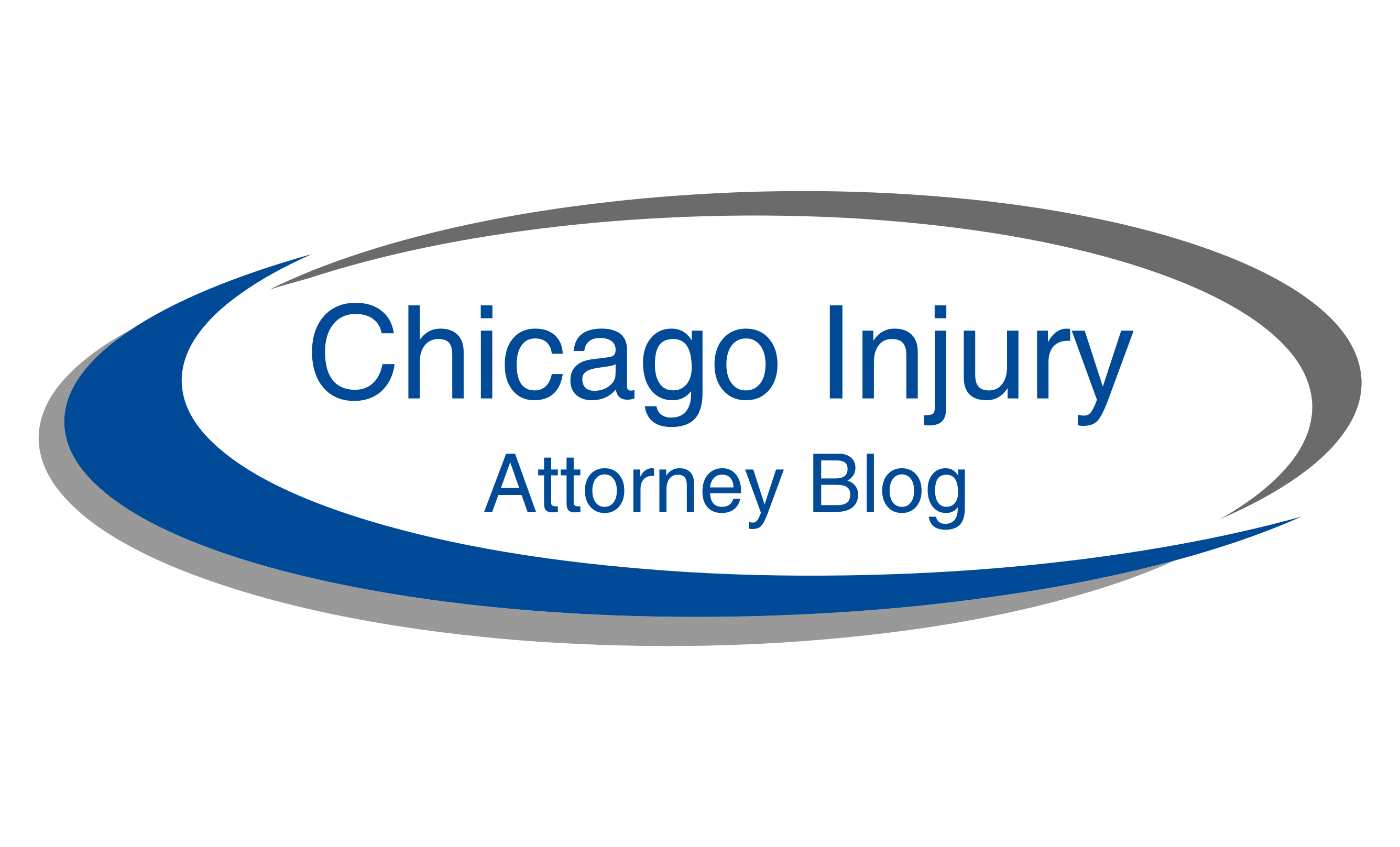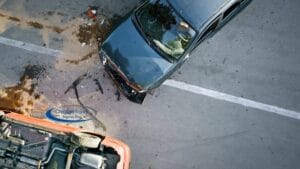T-bone accidents can lead to a variety of serious injuries, significantly impacting victims both physically and emotionally.
It is essential to understand the common injuries associated with these types of collisions, particularly for individuals who have experienced such incidents or who know someone who has.
This article examines various injuries, ranging from whiplash to internal organ damage, and outlines crucial steps to take following an accident.
Additionally, it emphasizes the role of a personal injury attorney in advocating for your rights and assisting you in navigating the recovery process.
Continued reading will provide valuable information to better prepare you for the challenges ahead.
Common Types of Injuries Associated with T-Bone Accidents
T-bone accidents represent a prevalent form of side-impact collision that can result in significant injuries for those involved in automobile incidents. Such collisions frequently occur at intersections, where one vehicle strikes another from the side, leading to various traumatic injuries, including whiplash, traumatic brain injuries, and fractures.
It is essential for victims to comprehend the types of injuries associated with T-bone accidents, as this knowledge is vital for obtaining appropriate medical treatment and pursuing potential compensation for injuries resulting from driver negligence.
1. Whiplash
Whiplash is a prevalent injury commonly sustained in T-Bone accidents, primarily impacting the neck and frequently resulting in both emotional trauma and physical pain.
Upon impact, the sudden acceleration and deceleration cause the head to move rapidly back and forth, leading to strain on the cervical spine. This rapid movement can damage soft tissues, including muscles and ligaments, and may also affect surrounding nerves.
Symptoms often present as neck stiffness, headaches, fatigue, and dizziness, which can significantly impede daily activities. Treatment options generally range from physical therapy and pain management to chiropractic care.
Plus physical recovery, many individuals encounter psychological challenges, such as anxiety and depression, as they navigate the emotional ramifications of their injury. This highlights the necessity of a comprehensive approach to recovery that effectively addresses both physical and mental health.
2. Head and Brain Injuries
Head and brain injuries, including traumatic brain injuries, represent serious outcomes of T-Bone accidents, typically resulting from blunt force trauma during the collision.
These injuries can present in various forms, ranging from concussions to more complex conditions such as contusions or diffuse axonal injuries. Symptoms can vary significantly and may include headaches, dizziness, cognitive difficulties, and, in some instances, loss of consciousness. Over time, individuals may experience long-term effects, including chronic pain, memory impairments, and emotional disturbances, such as anxiety or depression.
Recovery from these injuries can be a multifaceted process that requires medical intervention, physical therapy, and supportive counseling. It is essential to address not only the physical repercussions but also the potential emotional trauma that may arise, as effective healing often necessitates a holistic approach that considers both the body and the mind.
3. Neck and Spinal Cord Injuries
Neck and spinal cord injuries represent significant concerns for individuals involved in T-Bone accidents, often intensified by the phenomenon known as seatbelt syndrome during the collision.
These injuries may arise from the violent forces exerted on the body, resulting in a range of damage from whiplash to more severe spinal cord trauma. The repercussions of such incidents extend beyond physical health, potentially leading to enduring emotional and financial challenges. Individuals affected by these injuries may require extensive medical interventions, including surgery and physical therapy, to facilitate rehabilitation and recovery.
A comprehensive understanding of the legal aspects associated with these cases can offer valuable insights into the potential compensation accessible through personal injury lawsuits, thereby assisting victims in obtaining the necessary support during a difficult period.
4. Broken Bones and Fractures
Broken bones and fractures are common injuries resulting from T-Bone accidents, frequently leading to severe conditions that necessitate extensive medical treatment.
Among the most prevalent types of fractures associated with these collisions are femoral, pelvic, and rib fractures, which can significantly impede mobility and adversely affect an individual’s quality of life. The healing process following such traumatic injuries can be complex and protracted, often requiring immobilization with casts or surgical interventions involving rods or plates.
Each fracture presents unique implications for an individual’s future mobility, with potential complications such as chronic pain or a limited range of motion. These injuries are pivotal in personal injury claims, as medical expenses, rehabilitation costs, and lost wages contribute to compensation assessments. This underscores the importance of obtaining comprehensive legal advice to navigate these challenges effectively.
5. Internal Organ Damage
Internal organ damage, including injuries to the chest, represents a critical concern following T-Bone accidents and requires immediate medical attention.
In high-speed collisions, the force exerted can result in severe trauma to vital organs, such as the liver, spleen, or lungs. Individuals involved in these incidents may present symptoms such as intense abdominal pain, difficulty breathing, and indications of internal bleeding.
Timely recognition of these symptoms is essential, as delays in seeking treatment can lead to further complications. Medical interventions typically include imaging tests, such as CT scans, to evaluate the extent of the injuries, followed by surgical procedures to repair any ruptured organs, if necessary.
The long-term consequences of such injuries can vary significantly, ranging from chronic pain and organ dysfunction to psychological effects, thereby necessitating ongoing care and support for the affected individuals.
6. Cuts, Bruises, and Lacerations
Cuts, bruises, and lacerations are common yet frequently overlooked injuries in automobile accidents, particularly in T-Bone collisions.
These superficial injuries can vary from minor abrasions to more significant open wounds that necessitate medical attention. While they may not initially appear serious, it is essential to acknowledge their potential complications, such as infections or improper healing.
For individuals involved in such accidents, meticulous documentation of these injuries becomes critical, particularly when pursuing insurance claims. Accurate records not only serve as evidence of the injuries sustained but also ensure that individuals receive the compensation to which they are entitled for medical expenses and pain and suffering.
A thorough understanding of the intricacies associated with superficial injuries is vital for effective recovery and for navigating the insurance process.
7. Psychological Injuries
Psychological injuries, including emotional trauma and post-traumatic stress disorder (PTSD), can have a profound impact on victims of T-Bone accidents, often persisting long after physical injuries have healed.
These invisible wounds may present in various forms, affecting an individual’s ability to function in daily life, maintain personal relationships, or return to professional responsibilities. Victims frequently endure heightened anxiety, intrusive thoughts, and flashbacks related to the traumatic event.
Treatment options, such as therapy, medication, and support groups, are essential in the recovery process, offering coping mechanisms and strategies to help individuals rebuild their lives.
These psychological challenges can significantly influence compensation claims in personal injury lawsuits, as they underscore the overall impact of the accident’s aftermath. A comprehensive evaluation of both mental and physical injuries is necessary for an accurate assessment of damages.
What to Do if You Have Been Injured in a T-Bone Accident
If there is an injury resulting from a T-bone accident, it is essential to take prompt action to protect both your health and legal rights. This process should commence with seeking medical treatment and securing a police report.
1. Seek Medical Attention
Seeking medical attention immediately following a T-Bone accident is essential, even if the individual feels fine, as serious injuries may not be immediately apparent.
Delayed symptoms can arise from internal injuries or whiplash, necessitating comprehensive evaluations such as X-rays or MRIs. Prompt treatment not only facilitates recovery but also provides critical documentation for any future claims related to emotional distress or physical damages.
These evaluations are instrumental in establishing a clear connection between the incident and the injuries sustained, thereby aiding individuals in substantiating their claims. It is imperative to recognize that neglecting to seek care could jeopardize potential legal actions, underscoring the necessity for swift intervention to ensure both physical well-being and the protection of legal rights.
2. Report the Accident
Filing a police report following a T-Bone accident is essential for accurately documenting the incident and establishing facts that may support an insurance claim.
This report serves as an official account of the collision, capturing vital details such as the time, date, and location of the accident, along with witness statements and a preliminary assessment of fault. When seeking recourse for driver negligence, this report becomes a critical piece of evidence. It can substantiate claims concerning damages and injuries, thereby reinforcing the validity of the case against the at-fault driver.
Moreover, possessing a formal record can expedite the claims process with insurance companies, ensuring that all parties involved are held accountable for their actions.
3. Gather Evidence
Gathering evidence at the scene of a T-bone accident is essential for establishing liability for damages and supporting an insurance claim.
This process entails collecting various critical data, including photographs of the vehicles involved, the precise location of the incident, and any pertinent traffic signs or signals. Witness statements can provide valuable third-party perspectives, thereby enhancing the credibility of the claim. Detailed damage reports from law enforcement or insurance adjusters can accurately document the extent of injuries and the circumstances surrounding the incident.
Each piece of evidence is instrumental in creating a comprehensive narrative, ultimately influencing the outcome of personal injury claims and ensuring that all parties receive fair compensation.
4. Contact a Personal Injury Attorney
Contacting a personal injury attorney following a T-Bone accident can significantly aid individuals in navigating the complexities associated with compensation for injuries. Often, these consultations are offered free of charge, allowing clients to explore their options.
During the initial meeting, clients can anticipate a detailed discussion regarding the specifics of their case, including the extent of their injuries, medical expenses incurred, and any lost wages resulting from time away from work.
Personal injury attorneys possess the expertise necessary to evaluate the nuances of each situation, leading to a more accurate assessment of potential compensation. With expert legal representation, individuals can enhance their negotiating position when dealing with insurance companies that may attempt to minimize payouts.
Ultimately, engaging a personal injury lawyer not only alleviates the burden of managing claims but also give the power tos victims to pursue the justice they rightfully deserve.
How a Personal Injury Attorney Can Help You
A personal injury attorney plays a crucial role in assisting victims of T-bone accidents. This includes conducting thorough investigations of the case, negotiating with insurance companies, and representing clients in court when necessary.
1. Investigate Your Case
One of the primary responsibilities of a personal injury attorney is to conduct a thorough investigation of the case, systematically gathering all necessary evidence to substantiate the claims in a personal injury lawsuit.
This process typically begins with the meticulous collection of physical evidence, including photographs of the accident scene, medical records detailing the injuries sustained, and any pertinent surveillance footage. The attorney may also reach out to witnesses, conducting interviews to capture their statements and gain various perspectives on the incident.
Additionally, analyzing police reports is a critical component of this process, as these documents often contain essential information regarding the circumstances of the accident, the parties involved, and any traffic citations or violations that were issued.
By assembling this comprehensive body of evidence, the attorney establishes a strong foundation, thereby increasing the likelihood of a favorable outcome for the injured party.
2. Determine Liability
Determining liability in a T-bone accident is essential, as it directly influences the potential for obtaining compensation for injuries incurred as a result of driver negligence.
Attorneys utilize a range of methodologies to thoroughly analyze the circumstances surrounding each incident. A prominent approach is accident reconstruction, wherein experts recreate the crash to ascertain the specific actions of each driver at the moment of impact. This technique frequently incorporates information from police reports, physical evidence collected from the scene, and data retrieved from vehicle event recorders.
Additionally, witness testimony is crucial, as firsthand accounts can offer valuable insights or corroborate the findings derived from the reconstruction process.
By systematically gathering and synthesizing these pieces of evidence, legal professionals strive to construct a compelling case that clearly establishes liability.
3. Negotiate with Insurance Companies
Negotiating with insurance companies is a vital responsibility of a personal injury attorney, as they strive to secure equitable compensation for injuries sustained in a T-bone accident.
In this process, the attorney employs a variety of negotiation strategies, highlighting the strengths of the victim’s case while effectively addressing any potential weaknesses that may be exploited by the insurance company.
Common tactics employed by these companies often include lowball offers, expedited settlements, and efforts to downplay the severity of the injuries. To counteract these strategies, it is imperative for legal professionals to meticulously document all medical records and gather substantial evidence that supports the claim.
Maintaining open lines of communication with clients throughout the negotiation process is essential, ensuring that they comprehend their rights and the actual value of their claim, thereby facilitating a more equitable settlement.
4. Represent You in Court
In certain circumstances, it may be necessary for a personal injury attorney to represent an individual in court to ensure the protection of their rights in a personal injury lawsuit stemming from a T-Bone accident.
Navigating the court representation process requires a comprehensive understanding of legal procedures and protocols. During this period, individuals can anticipate various proceedings aimed at establishing the merits of the case. Witness testimonies, the presentation of evidence, and expert opinions play a critical role in determining the trial’s outcome.
An attorney prepares meticulously by gathering relevant documentation, interviewing witnesses, and formulating a compelling argument that addresses the specific nuances of the case.
They diligently work to anticipate the strategies of the opposing side while ensuring that every aspect of the client’s narrative is effectively communicated to the judge and jury.
Frequently Asked Questions
What types of injuries are commonly associated with t bone accidents?
T bone accidents, also known as side-impact collisions, can result in a variety of injuries depending on the severity of the impact. Some of the most common injuries associated with these types of accidents include:
- Whiplash
- Head and neck injuries
- Spinal cord injuries
- Broken bones
- Internal bleeding and organ damage
- Brain injuries
If you have been injured in a t bone accident, it is important to seek medical attention immediately, even if you do not feel any pain or have visible injuries.
How do t bone accidents typically occur?
T bone accidents most often occur at intersections when one vehicle fails to yield to the right of way, resulting in a collision with the side of another vehicle. These accidents can also occur in parking lots or on highways when drivers change lanes without properly checking for other vehicles.
Can t bone accidents result in long-term injuries?
Yes, t bone accidents can result in long-term injuries and even permanent disabilities. Whiplash and spinal cord injuries can cause chronic pain and limited mobility, while brain injuries can have lasting effects on cognitive function.
Who is at fault in a t bone accident?
Determining fault in a t bone accident can be complicated, as it depends on the specific circumstances of the accident. In some cases, it may be clear that one driver was at fault for failing to yield or driving recklessly. In other cases, both drivers may share some responsibility for the accident.
What should I do if I have been injured in a t bone accident?
If you have been injured in a t bone accident, it is important to seek medical attention and contact a personal injury attorney right away. They can help you understand your rights and options for seeking compensation for your injuries and damages.
Can I receive compensation for my injuries in a t bone accident?
If you have been injured in a t bone accident due to the negligence of another driver, you may be entitled to compensation for your medical expenses, lost wages, pain and suffering, and other damages. An experienced personal injury attorney can help you build a strong case and fight for the compensation you deserve.





